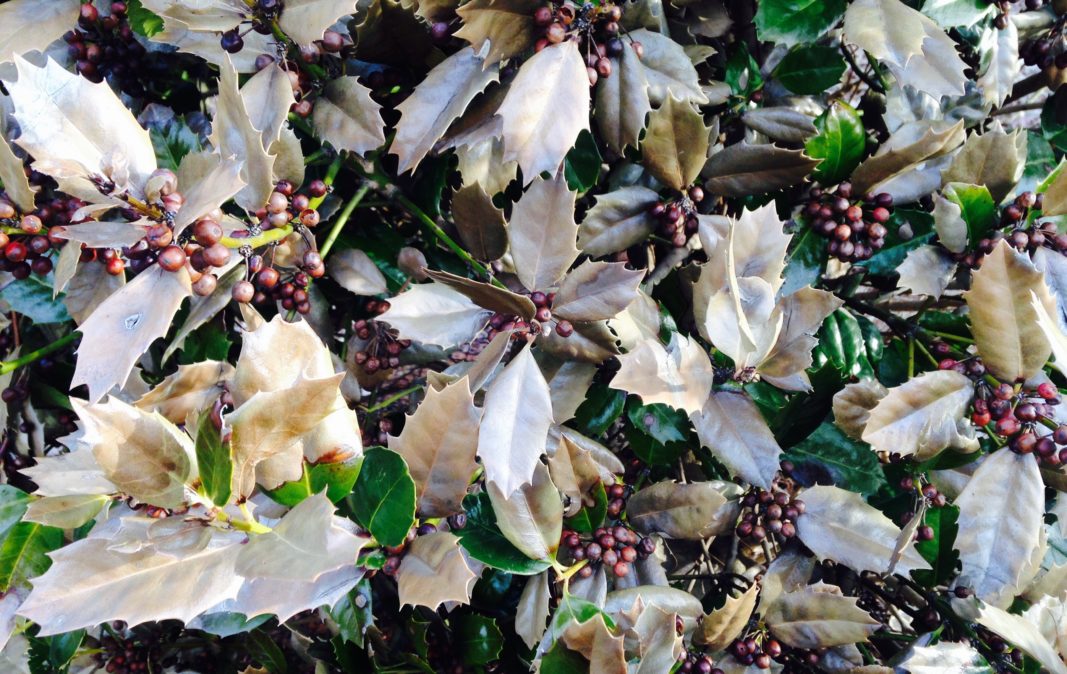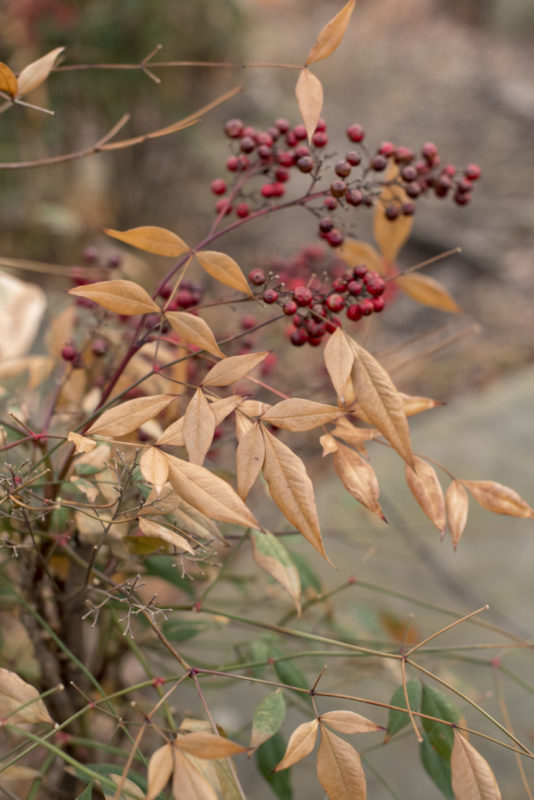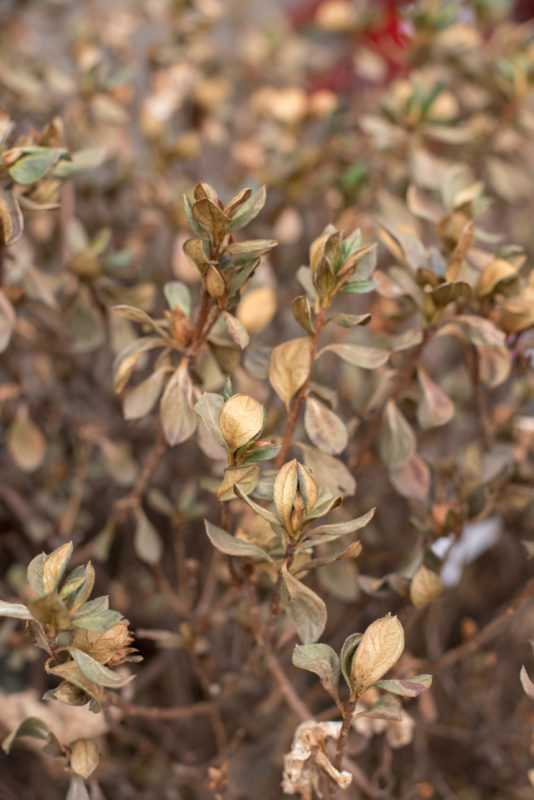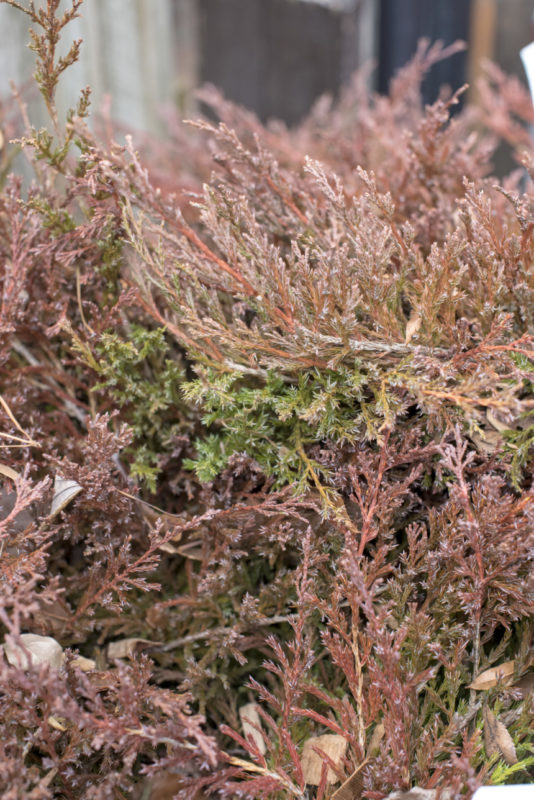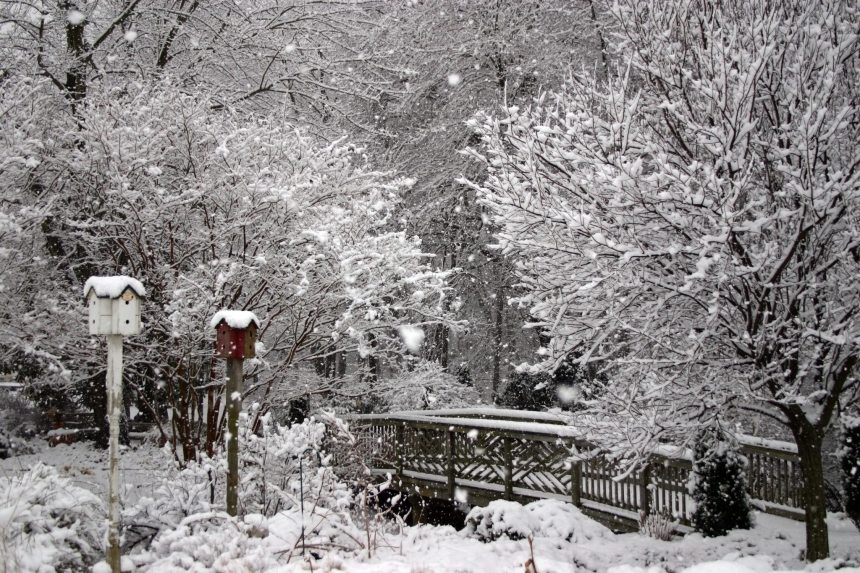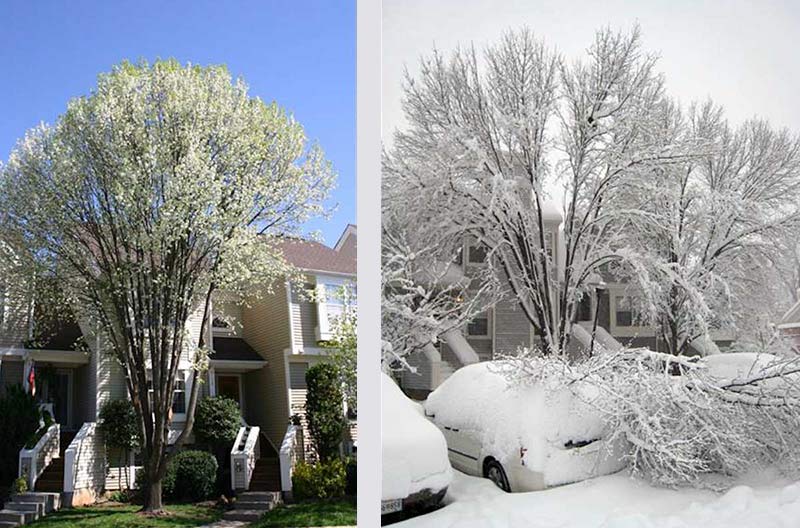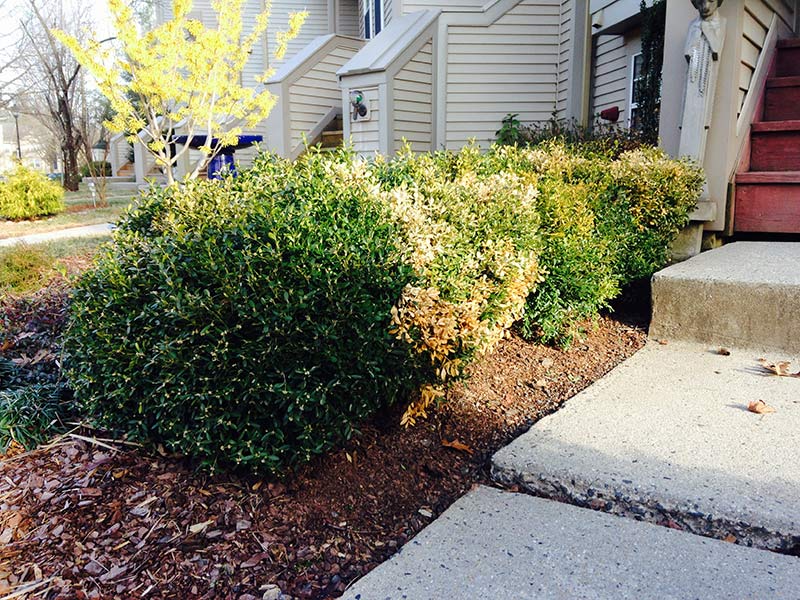Winter Damage: What is it and What Can I do About it?
We’ve faced some brutal cold spells this winter and are already seeing the damage to some of our more vulnerable landscape plants. With winter damage, plants typically have dry, brittle and brown leaves, and many people assume these plants are dead. The good news is that plants are amazing in their resiliency and more often than not they will put out new growth and fully recover this spring. If you have plants that appear to have winter damage, resist the urge to dig them up. We recommend leaving them in the ground to give them every opportunity to live and thrive this spring.
Identifying Vulnerable Plants
The plants most vulnerable to winter damage are:
- Broadleaf evergreens
- Those that have been planted in the past year
- Container plants
- Any plant that is at the boundary of its viable gardening zone
Examples of vulnerable plants include gardenia, camellia, southern magnolia, nandina, laurels, boxwood, hollies, figs, hydrangea and rosemary. Container plants are especially susceptible to winter damage since the roots are adapted to growing in the sheltered soil environment. With a limited amount of soil to insulate and protect the roots, they may freeze and die. Recently planted broadleaf evergreens are vulnerable to winter damage because they continue to pump water through their leaves year-round (this process is called transpiration). During extended cold spells, water in the soil can freeze and become unavailable to the plant. This becomes more problematic when we do not get sufficient snow or rain to replenish the soil moisture. Windy conditions will also increase transpiration rates causing the foliage to dry and turn brown. Imagine you planted an evergreen holly this summer. It is still in the process of establishing a full root system, therefore its ability to absorb water from the soil is limited. This year (2017-18) winter arrived early with very cold, dry and windy conditions. With this combination of stresses, it is likely this plant will experience some amount of damage.
What Can You do to Mitigate Winter Damage?
- Check the soil moisture throughout your landscape with special attention to vulnerable plants. If you discover they are dry, take time to water them on a day when temperatures are above 40 degrees F.
- Be patient and wait for signs of recovery this spring. Most plants will show signs of recovery in April and May, however, others may be delayed until June. Resist the urge to remove or start pruning until we know the extent of injury.
- After you see new growth beginning to emerge and you are able to determine the extent of injury, prune to remove dead branches. Avoid removing live, green growth as the plant needs leaves to produce food and aid in recovery.
- As the new growth begins to emerge, fertilize with a good quality, slow release plant food to speed up the recovery process. See our staff for specific fertilizer recommendations.
We are here to help!
There are many factors that influence the extent and effects of winter damage your plants will experience. Exposure to wind, temperature and moisture extremes, plant species, root establishment, pruning, mulching and watering practices all will guide our decisions in how best to assist our plants through recovery. The more information you provide us, the better we are able to help you. Photographs are useful in determining the pattern and extent of winter injury, but don’t tell the whole story. We need plant samples to examine and determine if the buds are viable. Bring 6” to 12” twigs, along with photos of the plants in question, to the Plant Clinic at any of our three Merrifield Garden Center locations for consultation and evaluation with our plant specialists. Don’t let the winter get you down! Lilacs, cherries and spring bulbs are just a few of the plants that thrive following a cold winter. There will be plenty of blooms to reward us this spring and we’ll be here to help make the most out of your garden.


